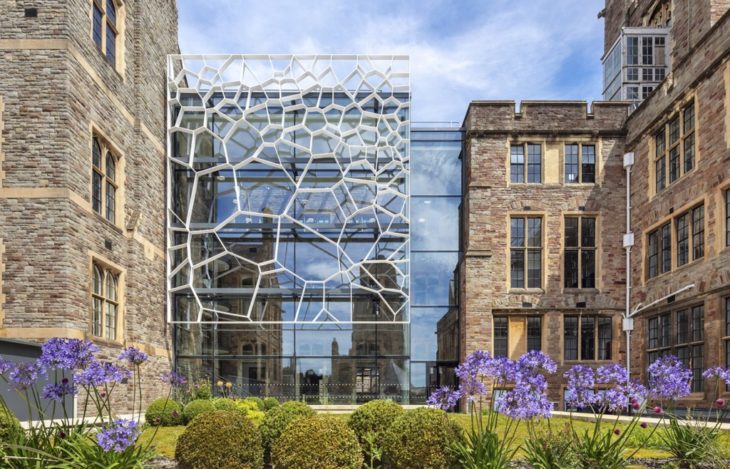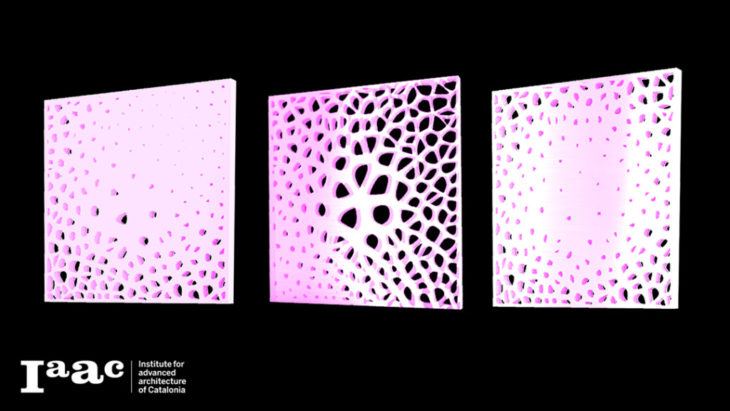Concept
The Voronoi pattern was associated to kinetic movement in this project. This kind of pattern has the potential to expand its number of ‘cells,’ diversify itself by different densities of the same cells, cluster and engulf from the centers or from the frames of the cells, and proliferate outside of its ownself, amongst other exploration. Several iterations were created: the enclosure of monotonous Voronoi cells, the kinetics of different densities of cells, and finally kinetics suing NURBS whereby the Sun was the parameter operating the attractor point.
Building Inspiration

The Fry Building, United Kingdom.
Iterations
The centroids and the densities of the cells are kinetic based on the exposure of the facade to direct sunlight. When the light is too intense for the studying and academic environment, the cells enclose. When daylight is stronger, the cells open. The density in the center is lesser than that of the perimeter of the facade because that is where least light is being received. The larger openings welcome more light.

Video
The first try of the Voronoi facade had opening and closing cells with equal scales. The second iteration involved the same mechanism but with cells of varying scales and different densities, but still static. Our third try was a movement of all features of the Voronoi facade based on sunlight.
Kinetic Voronoi Facade is a project of IAAC, the Institute for Advanced Architecture of Catalonia, developed during the Master in Advanced Architecture (MAA01) 2020/21 by students: Nader Akoum & Meagan Sinead; faculty: David Andrés León; faculty assistant: Ashkan Foroughi; and student assistants: Laukik Lad & Uri Lewis
